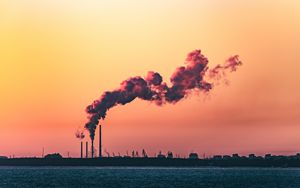(Finance) – In 2023 it national energy scenario was characterized by a sharp decline in carbon dioxide emissions (-8%) and by a new reduction in primary energy consumption (-2.5%), slightly lower than that of the Eurozone (-3%). The petrolium has once again largely become the leading energy source with 35% of the total but, overall, the share of request covered by fossil sources – oil, gas and coal – marked the minimum of the last 50 years (71%).
This is what emerges fromAnalysis of the Italian energy system by ENEA for the whole of 2023, which also highlights a new all-time high for wind power And photovoltaic, which came to cover 17.5% of demand on an annual basis, thanks to the growth in installed capacity. “This growth trend represents the main, if not the only, virtuous driver for ongoing decarbonisation”, explains Francesco Gracceva, the ENEA researcher who coordinates the analysis. “The decrease in consumption is the result of a lower use of fossil sources such as gas (-10%), coal (-30%) and oil (-2%), only partially offset by the greater production of energy from renewable sources (+ 13%) and electricity imports, which rose to an all-time high (+19%),” he adds.
In fact, the drop in demand “is mainly linked to non-structural phenomena, such as the decrease in gas consumption for heating in the first quarter of 2023, due to a very mild winter, the National plan of containment of consumption and to the still high energy prices, but also to the contraction in industrial production which has reached almost dramatic peaks in some energy-intensive sectors, falling below 2020 levels”, continues Gracceva. The only sector bucking the trend is transport, with energy demand returning to pre-crisis levels (+2%) driven by the aviation sector (+20%).
The decrease in emissions Of CO2 (-8%) is attributable to the lower use of fossil fuels: over three-quarters of the decline was recorded in sectors ETS (electricity generation and energy-intensive industry), whose emissions are estimated to fall by 16%, the rest is attributable to the contraction in gas consumption in the civil sector (non-ETS), whose emissions are estimated to fall by 3%.
More specifically, 70% of the emissions reduction concerns the sector electriclargely due to economic phenomena such as the ‘readjustment’ of the mix of sources after the 2022 tensions on energy markets. “In fact, the increase in carbon intensity recorded in 2022 proved to be a temporary phenomenon due to a set of factors: hydroelectric production increased (+10 TWh from the historic low of 2022), gas production decreased (-25 TWh), the program to maximize the use of coal (-9 TWh) and fuel oil has ceased, while electricity imports (+8 TWh) have reached a historic record”, underlines Gracceva.
In this scenario the transition of the energy system regains its pace towards decarbonisation, measured by ENEA through the ISPRED index (Security-PRICE-Decarbonization Index which measures the progress of the energy transition), which recorded a significant improvement in 2023 (+25%) compared to 2022, when it had fallen to the minimum of the series historic (since 2008), penalized by the increase in emissions and record energy prices. The overall value of the synthetic decarbonisation indicator in 2023 is almost double compared to a year earlier, while the single price component shows an improvement of 20%.
“For the next few years, the positive trend of decarbonization can be expected to continue in the energy sector generation electric, although at a more contained pace net of the economic factors that characterized 2023″, clarifies Gracceva. “However, it remains difficult to achieve the rate of reduction in emissions, around 5% on average per year, necessary to reach the decarbonisation target expected for 2030”, concludes Gracceva.
On the front of wholesale prices, despite the declines recorded, in 2023 the average prices of gas and electricity remained at historically high levels, such as to continue to exert pressure on the containment of demand: in the fourth quarter of 2023 the price of gas at the Virtual Trading Point was over €40/MWh, almost twice the long-term pre-crisis averages in 2022, the price of electricity on the Italian electricity exchange was €124/MWh, more than twice the pre-crisis averages.
The analysis also highlights a strong expansion (+25%) at a global level public spending in energy research in the 2019-22 period, concentrated in particular on “enabling” technologies, with a significant growth in spending on energy efficiency (almost a quarter of total public spending on energy research), but with a slowdown in spending on renewables. However, this increase is not seen in Italy where the growth in public spending on energy research is lower (+0.6%) with increases limited to the hydrogen (approximately +160%) and nuclear sectors (approximately +40%) . The decline in research spending in the energy efficiency sector appears particularly critical (-12%).
(Photo: Marek Piwnicki on Unsplash)
